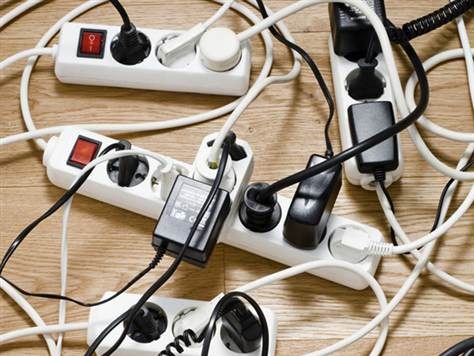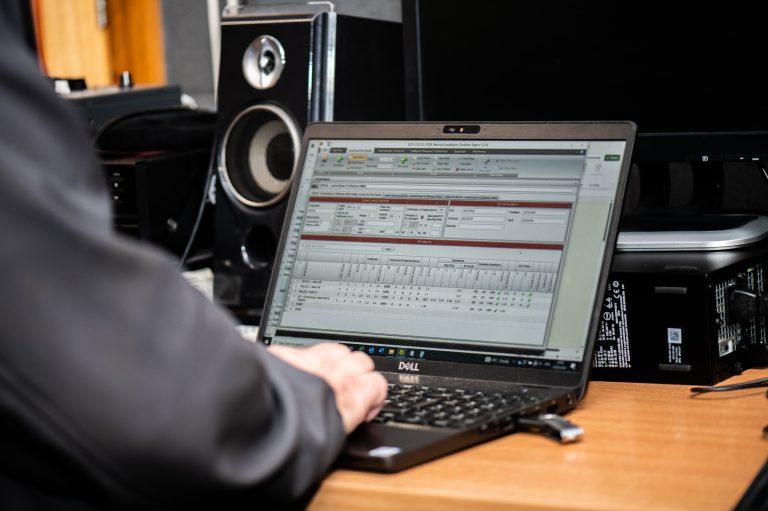Everyone knows daisy chaining is risky, but it is still common practice. In this article we offer 7 practical ways to reduce the risk of fire from daisy chaining.
What is daisy chaining?
Daisy chaining is the process of combining multiple extension leads or power leads.
Why is daisy-chaining dangerous?
Ashley Boyce, our in-house appliance safety testing expert, explains this in more detail in a previous article. However in summary there are two issues:
1 – Combining multiple extension cables and multi-socket adaptors increases resistance and
2 – Using multiple appliances simultaneously can very easily to overload the circuit.
Both of these issues cause heat which in turns creates a fire risk.
Why you are not always protected by the fuse?
Some adaptors, such as many block or cube adaptors don’t actually contain a fuse. Even when they do, a fuse can sustain a higher than rated current for a short time without blowing, which can also can lead to excessive heat build up within the plug, lead or appliance itself.
7 ways to minimise the risks fire from daisy chaining
1. Where possible, desks or appliances should be moved close enough to a socket outlet that extension leads are not required.
2. If you do need an extension cable, use one that is the correct length – a 5m cable is better than 2 x 2.5m cables, as each plug-socket connection increases resistance. Equally, failing to unroll a longer cable also creates a risk of fire, as heat builds up in the unwound lead and can’t dissipate naturally through the air.
3. Check the current rating of the extension lead before you use it to ensure it is the right value for the appliance you are using – most are 13A, but some are 10A. The rating should be clearly marked on the back of the casing.
4. Never overload the maximum capacity of a socket. A typical socket can handle 13A or approximately 3000W. Add up the current of each appliance you plan to plug in, to check that it doesn’t exceed the maximum. Every appliance should have a sticker or label identifying the usage values.
Here are the average values for some typical office appliances:
- Kettle: 13A
- Laptop charger: 0.5-1A
- Phone charger: 0.5-1A
- Portable radiator (oil-filled): 13A
- Standalone Office printer: 7A
- Desktop printer: 3A
- Desktop Fan: 0.5-1A
- Portable A/C unit: 6A
So, you could safely charge 4 mobile phones simultaneously from a 4-way power bar (4 x 1A = 4A which is less than 13A), but a radiator or kettle should not share current from a socket with any other appliance.
Electrical Safety First offer a handy socket calculator. It is aimed at domestic users, but gives a great visual representation of how much power each item uses.
5. Regularly check for danger or signs of fire. Check cables, adaptors and unplug the appliance to check the underside of the plug. If adaptors, cables or plugs start to feel hot, if you smell burning or see signs of melting – stop using the appliances and unplug the extension leads or adaptors immediately. In addition, ensure that the adaptors are kept away from water and don’t present a trip hazard.
6. Regular electrical testing will check the safety of your appliances, extension cables and assess sockets for damage. This will ensure you meet your obligations as an employer to provide a safe working environment (electricity at Work Regulations 1989). If you need advice on electrical testing, please contact Intersafe.
7. If you regularly rely on extension cables, consider using an approved electrical contractor to add more permanent sockets to your circuits. Don’t forget to gain a minor works certificate which confirms that the modified circuits are safe and compliant with electrical regulations.
Arrange electrical safety testing in your workplace Contact Intersafe




